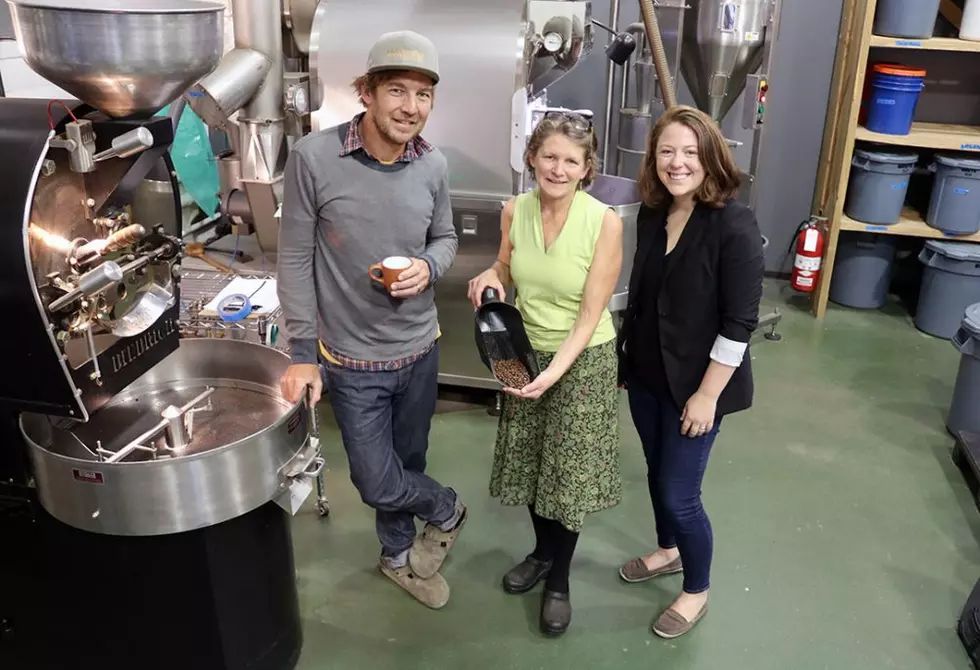
Climate change and coffee: Missoula business considers the future of the bean
The coffee is stacked three sacks deep at Black Coffee Roasters, not far from the roasting machine. The scent of freshly brewed coffee fills the air, coupled with the din of early morning banter.
But in the coming years, the cost of those beans and that morning cup of Joe could begin to rise as climate change shrinks the world's coffee growing regions. And that holds implications for both coffee drinkers in Missoula and those who've built a business around the coveted bean.
“This is not a preordained conclusion, but yet the threats are real,” said Skye Borden, state director of the Research and Policy Center at Environment Montana. “The coffee growers are experiencing the same thing we're experiencing here with extreme weather. Variable weather is really challenging for a perennial crop like coffee beans.”
A study published last month in the Proceedings of the National Academy of Sciences found that areas suitable for growing coffee in Latin America could decline between 73 and 88 percent. Such losses could affect the livelihoods of 100 million people who work in the coffee industry, the study found.
That includes farmers in Latin America and coffee distributors in Missoula, including Jim Chapman, the owner of Black Coffee Roasters.
“What I've seen on the ground, there's already a migration taking place in the coffee regions,” said Chapman. “There's a history of places that have been growing coffee for 100 years, and now the crops are either being attacked by pests or rust, which they've never experienced in those areas before, or the weather is too hot or too cold in certain areas. The migration is already happening.”
Coffee spends three years in a nursery before it's planted, where it takes three to five additional years to produce its first crop. That crop typically lasts five to six years before the rotation starts again, Chapman said.
It is, he added, a perpetual cycle of planting that could be disrupted by changes in climate and weather. But as one growing region becomes unsuited to coffee production, others may become more ideal for the crop.
“It's already happening,” Chapman said. “We've already seen areas in Mexico where they weren't growing it 10 to 15 years ago, and they are now.”
Amy Cilimburg, executive director of Climate Smart Missoula, said changes in the world's coffee-growing regions could have impacts beyond prices and the supply chain. It could also impact pollinators.
Cilimburg, who began her climate work more than a decade ago with Montana Audubon, said many state birds migrate south to the coffee regions in Latin America over winter. Their role in the larger ecosystem can't be overlooked, she said.
“So many of our birds migrate to the south, and they migrate to the coffee plantations – these organic, shade-grown plantations,” Cilimburg said. “Those birds are pollinators and are important to the system.”
According to the National Oceanic and Atmospheric Administration, August 2018 recorded the fifth highest global temperature in the 139 years the record has been kept. It also marked the 42nd consecutive month with above-average temperatures.
The six warmest years on record for the planet have all occurred since 2010, NOAA reported.
“One of the ways to buffer some of the extremes of climate change, especially the heat, is to have the shade-grown coffee and to encourage shade and grow shade,” said Cilimburg. “They're in the same places where we get our coffee, where our birds go, and that does connect us, and it can help us think about solutions to climate change and how we can do right here at home.”
Chapman agreed that climate change will present new global challenges, though he believes the economy will find a way to evolve.
As a business owner in Missoula, he's already made changes at Black Coffee Roasters to reduce the company's carbon footprint, and he believes consumers will solicit environmentally friendly companies over those that are not.
Chapman recently invested in an energy efficient roaster, and he's changed the company's packaging to incorporate more recyclables. Doing so wasn't cheap, he said, though he believes it was the responsible thing to do.
“I can't pretend that I'm an environmentally benign business,” he said. “Coffee is extremely potent to the environment, and not always in the best ways, but we're making efforts where we can. We're the launch pad for how people consume their coffee, how it arrives at their home and how they go about drinking it. We do our best to reduce our own business impact.”
While the U.S. government has taken a back seat in addressing climate change, Borden said, a growing number of businesses are taking the science seriously, or at least the demands of consumers.
According to the Climate Disclosure Project, 89 percent of high-impact companies now have carbon emission targets, and 14 percent are committed to aligning their targets with the latest climate science.
“We're seriously lacking in federal guidance, but what we are seeing in its place is this tremendous movement toward climate action from individual entrepreneurs and businesses,” Borden said. “They can't afford to pretend it's not happening.”
